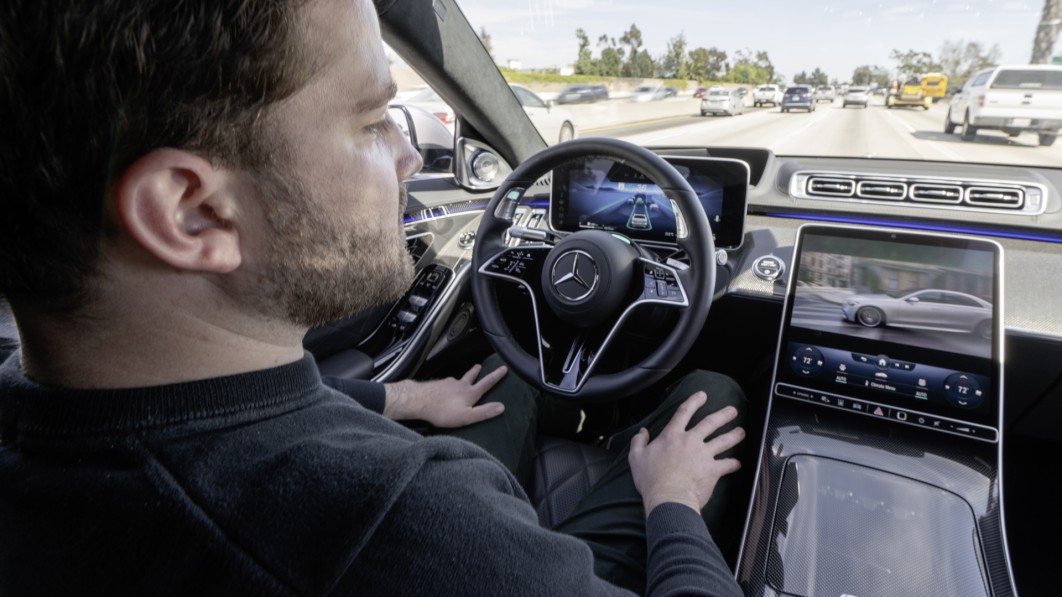LOS ANGELES – It’s the worst kind of LA traffic. That rising, acceleration-to-35-then-slam-the-brake inconsistency that aggravates your last nerve. Oh, and there’s that driver who aggressively changes lanes right in front of you, even though traffic is pretty much stuck in all lanes.
Enter Mercedes-Benz’s latest driver assistance system, Drive Pilot, which allows the car to take over and navigate this most tedious part of the commute, keeping your hands off the steering wheel, your feet off the pedals and your eyes off the road. For real.
Drive Pilot is Mercedes’ entry into level 3 autonomous driving, and a short demonstration showed its potential in relieving stress for commuting. In conjunction with Bosch’s ongoing Automated Valet Parking system, Mercedes has integrated two technologies that take the worst part of driving out of the equation.
Of course, there are some limitations to the Drive Pilot system: it only works on well-marked, multi-lane, divided highways at speeds below 40 mph. It must be day. There should be no road construction, tunnels or toll booths. The weather can’t be bad (rain is OK, snow is a no-go). The driver must remain seated. And the car only drives in its existing lane.
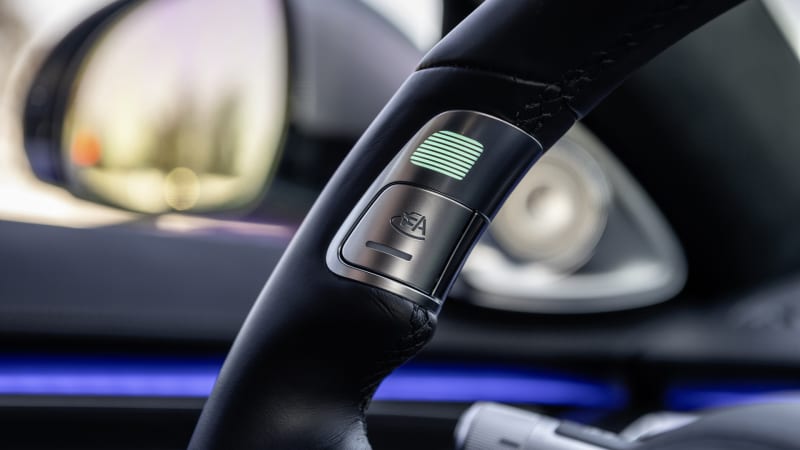
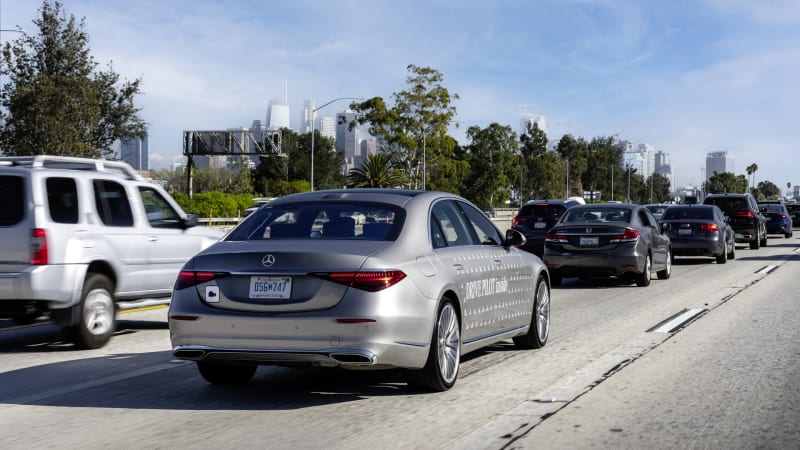
During a short ride (as a passenger) in a new S 580 4Matic along the choked Santa Monica Freeway (aka “the 10”), the Drive Pilot system behaved flawlessly – essentially behaving like the smartest of the adaptives. cruise controls. If the driver wanted to compose an email or watch a video, the system allowed it. You don’t have to hold a symbolic finger on the wheel to avert a warning every 15 seconds. Our “driver” – Lucas Bolster, chief engineer of automated driving at Mercedes R&D – says Drive Pilot drove him hands-free and eyes averted by a 65-minute rush hour on the same stretch of road. In our short demo, acceleration and braking were smooth, with no lurching stops, and no ping-pong between lane markings. It was the best driver.
At one point, a lane jumper hinted that he was going to penetrate our right rear panel. The Drive Pilot swerved deftly to the left side of the lane. The system moves the car to the farthest edge of the lane marking, but does not change lanes if the approach of the other car is persistent (that is a future development that Mercedes says is feasible). If a car breaks in front of you, the Mercedes politely gives way. In such a case, it will not honk, but will if a vehicle ahead decides to change direction.
The Level 3 system is a step further in the autonomy of Mercedes’ existing Level 2 system which has active steering, braking and distance control, but requires a driver to keep their attention on the car. Level 3 means that the car takes full control (and the Mercedes legal department takes responsibility) for the car’s actions. But it also requires the driver to be able to resume control with a 10-second warning from the system – if not, the car brakes to a stop and turns on the turn signals. So sleep tight.
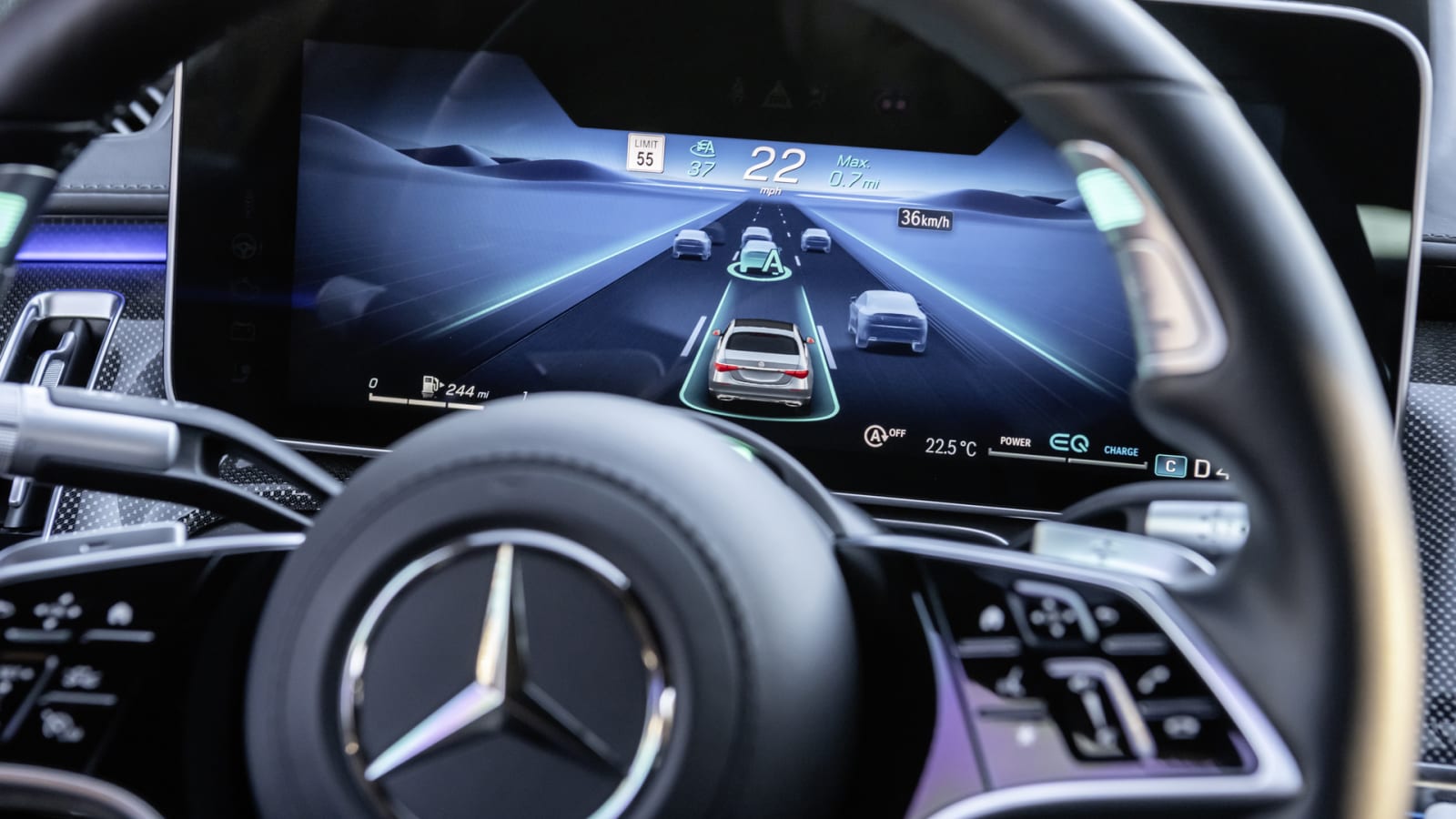
Drive Pilot will be optional in the S-Class and EQS in Germany, but has yet to be approved by US regulatory authorities. Mercedes has already completed 50,000 miles of controlled testing in California and Nevada, and is in talks with public-use regulators, assuming other states will follow suit if those two states approve the system.
Prices for the European market will be announced in April. No date has been set for US pricing. A Mercedes spokesperson said Drive Pilot will cost less than $12,000 — the current price for Tesla’s still-idle “fully self-driving” system.
How does it work? Without getting too geeky, Drive Pilot uses a combination of long-range radar, long-range LiDAR and multi-function stereo cameras. The key element is the LiDAR sensor and its AI signal processing, developed by supplier Valeo, which captures 25 frames per second, can see 200 meters and classify and track any object. There’s even a microphone that listens for sirens. To be truly level 3, the system needs redundant steering, brakes and power. The system’s AI also learns road quirks for OTA updates: do Botts Dots reflect sunlight hard at dusk on certain road sections? Are there any “traffic memory” delays at certain times, even when no accident has occurred?
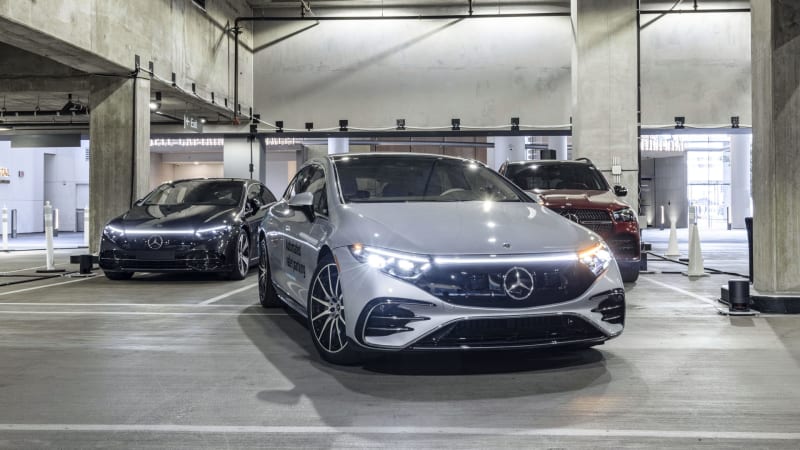
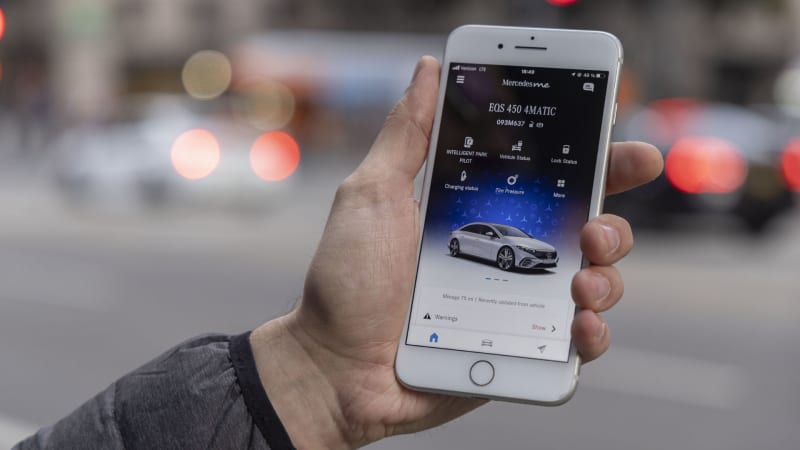
Then there’s Intelligent Park Pilot (as Mercedes calls it), or Automated Valet Parking, as supplier Bosch calls it. This is a step towards level 4 autonomous driving – where a well-equipped car can drive into a parking garage, find a parking space and park itself without anyone in the vehicle.
The technology requires much more than a vehicle with Level 3 equipment. The parking garage will need ground sensors to communicate the route with the car, cloud connectivity where there may be no wifi or cellular penetration underground, as well as a phone app that allows car owners to reserve a parking space, let go of control and call the car, said Mariana Eichel, project manager Bosch AVP. The system requires that all cars, regardless of brand, use the same communication protocol. So while Mercedes is the first to demonstrate the system (it was recently installed at Stuttgart airport), Bosch has developed it to work with all cars.
During a demonstration at a hotel in downtown Los Angeles, a Mercedes EQS (with driver) arrived at a specially marked drop zone in the porte cochère. After the driver exited the vehicle, the car communicated with Bosch’s intelligent infrastructure, drove itself through a sharp bend – albeit at a crawl speed – and backed up into an open parking lot.
Why would a garage spend all this money – price undisclosed – to have this technology? Well, without parking attendants, there are no ongoing payroll costs and insurance liability premiums for damaged cars would likely plummet. In addition, since no one has to get in or out of an autonomously parked car, the vehicles can be packed like sardines, allowing for more cars and thus more revenue. Bosch is also looking at airport rental car parking technology, where the car comes to you instead of you looking for it, and parks itself at the drop-off point.
Did you expect more? Look, this is incremental technology. Regardless of Elon Musk’s bragging rights, there’s no such thing as fully self-driving. And that won’t be for years. This is an impressive next step.
